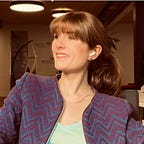Designing for Disruption
October 15, 2018
As technologists, we are always being told that we live in an era of rapid change, in which disruptive innovation is overpowering small product industries, generating new technological frontiers, and calling into question nearly everything we think we know about business. And as if this wasn’t overwhelming enough, we at SAP are left asking ourselves: How are we supposed to be “disruptive” and “run simple” at the same time?
In his inspiring SAP Design Talk session in Walldorf, James Ludwig, Vice President, Global Design and Product Engineering for Steelcase, spoke about the opposing forces of simplicity and disruptive innovation. James, an Illinois-native who, as a teenager dreamed of becoming an inventor, said that, in an age of discomfort and uncertainty, it’s a “risky time to be a successful business.” As creators and consumers, we are excited by disruptive technological advancements but still want simplicity; we profess to be eco-friendly and sustainable but are feverishly counting the days until the next iPhone release; we claim to be at one with our natural environment but spend our time behind screens viewing the world through a lens.
Victims of so-called technoculturalism*, James said that the ways of defining ourselves as individuals have never been more complex. In the world of digital influence, we strive to navigate the opposing forces of individuality and like-mindedness. We buy the same sneakers worn by our favorite popstar, and post photos on Instagram in the hope of increasing our number of likes and followers. And we face the same reality in our workspaces. We have more services available than ever: sports facilities, health services, banks, hairdressers, coffee corners, but are somehow left asking ourselves “Where am I in all of this?”
For office furniture manufacturer Steelcase, this presents an exciting design opportunity to support companies like SAP. In a world of frantic disruption, Steelcase is focused on simplicity and putting the individual back in the center of their work environment. According to the company’s philosophy, employees no longer want to work in dull and draining office spaces. They seek out connections to nature and are drawn to places with biophilic design elements. Whether its plants, natural light, woodgrain or outdoor seating, these natural elements serve as soothing, haptic distractions and are proven to impact our emotional, cognitive and physical wellbeing.
When it comes to personal identity in the workplace, Steelcase claims that employees are also looking for personalized experiences that reflect individuality. The Steelcase SILQ™ chair serves as a canvas for individual expression and a move against corporate blandness. Made of carbon fiber, the chair exploits all the advantages of a material commonly associated with airplanes and high-end cars: strong, flexible, light-weight, sustainable, unique. The chair embraces simplicity, as there are no hidden springs or mechanical elements. The single piece of carbon fiber bends and responds to the movement of your body, allowing for more ease and comfort. Employees can also choose from a range of sustainable material combinations and digitally printed fabrics to create their own customized chair.
SAP employees testing out a carbon-fiber chair.
James concluded his talk with a global message to the SAP audience: In the age of design thinking culture, “curiosity is the most important aspect of business, not knowing.” As we all continue to navigate the disruptive 21st-century technological landscape, there are several things we as employees at SAP and elsewhere need to remember: stay curious, ask questions, dare to fail, and always remain at the center of your life and work.
*Technoculturalism refers to the experience derived from the interaction between people and technology, especially computer technology and the Internet.
Hear more from James Ludwig in this interview with the SAP Design Talks team:
The SAP Design Talks regularly bring leaders from the international design scene to SAP. The sessions are held on a large stage for an internal audience of employees at various SAP locations around the globe.
Originally published at experience.sap.com on October 15, 2018.
